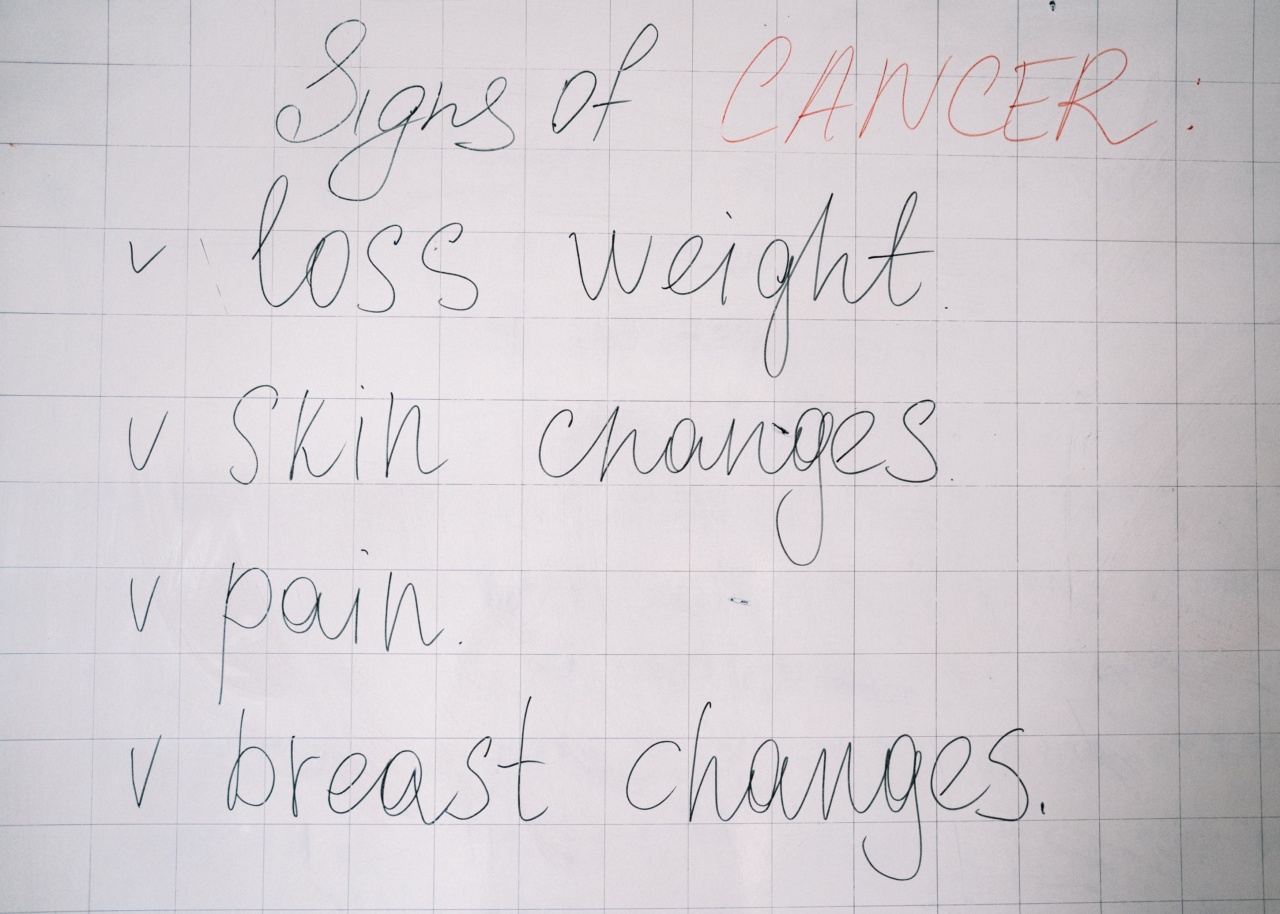Gynecological cancer is a type of cancer that affects the reproductive organs of women. These cancers can be difficult to detect in the early stages because symptoms may be mild or not present at all.
It is important for women to be aware of the different types of gynecological cancer and their symptoms so that they can be diagnosed and treated early. In this article, we will discuss the symptoms and types of gynecological cancer.
What is Gynecological Cancer?
Gynecological cancer is any cancer that occurs in a woman’s reproductive organs. The reproductive organs include the ovaries, fallopian tubes, uterus, cervix, vagina, and vulva.
These cancers are usually classified by the type of cells that are affected. The most common types of gynecological cancer are ovarian, uterine, and cervical cancer.
Types of Gynecological Cancer
Ovarian Cancer
Ovarian cancer is a cancer that occurs in the ovaries. The ovaries are located on either side of the uterus and are responsible for producing eggs and hormones.
This type of cancer can be difficult to detect in the early stages because symptoms may be mild or not present at all. Common symptoms of ovarian cancer include:.
- Abdominal swelling or bloating
- Abdominal pain
- Loss of appetite
- Weight loss
- Changes in bowel habits
- Feeling full quickly
- Frequent urination
- Pain during sex
Uterine Cancer
Uterine cancer is a cancer that occurs in the uterus, which is the hollow organ in the pelvis where a fetus grows during pregnancy. The most common type of uterine cancer is endometrial cancer, which starts in the lining of the uterus.
Symptoms of uterine cancer may include:.
- Abnormal vaginal bleeding
- Pain during sex
- Pelvic pain or pressure
- Painful urination
Cervical Cancer
Cervical cancer is a cancer that occurs in the cervix, which is the lower part of the uterus that opens into the vagina. Cervical cancer is one of the most preventable types of cancer because it can be detected early with regular screenings.
Symptoms of cervical cancer may include:.
- Abnormal vaginal bleeding
- Pain during sex
- Pelvic pain or pressure
- Unusual vaginal discharge
Vaginal Cancer
Vaginal cancer is a cancer that occurs in the vagina, which is the canal that connects the uterus to the outside of the body. This type of cancer is rare and often detected in later stages. Symptoms of vaginal cancer may include:.
- Abnormal vaginal bleeding
- Pain during sex
- Painful urination
- Bloody discharge
- Changes in bowel habits
Vulvar Cancer
Vulvar cancer is a cancer that occurs in the vulva, which is the outer part of the female genitals. This type of cancer is rare and often detected in later stages. Symptoms of vulvar cancer may include:.
- Itching, burning, or pain in the vulva
- A lump or bump in the vulva
- Bleeding or discharge not related to menstruation
- A change in the color or thickness of the skin of the vulva
Risk Factors for Gynecological Cancer
There are several factors that increase a woman’s risk for developing gynecological cancer. These factors include:.
- Age – The risk of developing gynecological cancer increases as a woman gets older.
- Family history of gynecological cancer – Women with a family history of ovarian, uterine, or breast cancer may have an increased risk of developing gynecological cancer.
- Obesity – Women who are obese have an increased risk of developing uterine cancer.
- Smoking – Women who smoke have an increased risk of developing cervical cancer.
- HPV infection – Women who are infected with HPV (human papillomavirus) have an increased risk of developing cervical cancer.
- Exposure to DES – Women who were exposed to DES (diethylstilbestrol) in utero have an increased risk of developing vaginal or cervical cancer.
Prevention of Gynecological Cancer
There are several steps that women can take to reduce their risk of developing gynecological cancer. These include:.
- Getting regular Pap tests – Women should have regular Pap tests starting at age 21 to screen for cervical cancer.
- Getting the HPV vaccine – The HPV vaccine can help protect against some types of HPV that can lead to cervical cancer.
- Maintaining a healthy weight – Women who are obese have an increased risk of developing uterine cancer.
- Not smoking – Women who smoke have an increased risk of developing cervical cancer.
- Limiting sexual partners – Women who have multiple sexual partners have an increased risk of developing cervical cancer.
Treatment of Gynecological Cancer
The treatment for gynecological cancer depends on the type and stage of the cancer. Treatment options may include:.
- Surgery – Surgery may be used to remove the cancerous tissue and any surrounding tissue that may contain cancer cells.
- Chemotherapy – Chemotherapy uses drugs to kill cancer cells or stop them from growing.
- Radiation Therapy – Radiation therapy uses high-energy radiation to kill cancer cells or shrink tumors.
- Hormone Therapy – Hormone therapy may be used for certain types of gynecological cancer that are hormone-sensitive.
Conclusion
Understanding the symptoms and types of gynecological cancer is important for all women. Early detection and treatment can improve outcomes and increase the chances of a full recovery.
Women should talk to their healthcare providers about their risk factors for gynecological cancer and ways they can reduce their risk.




























